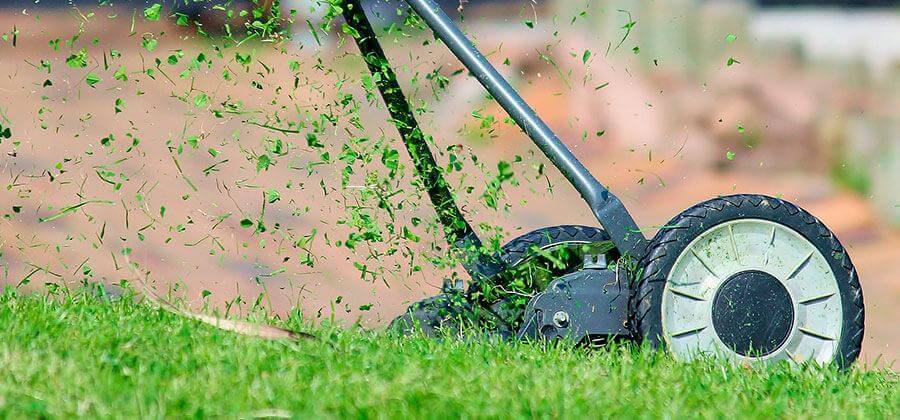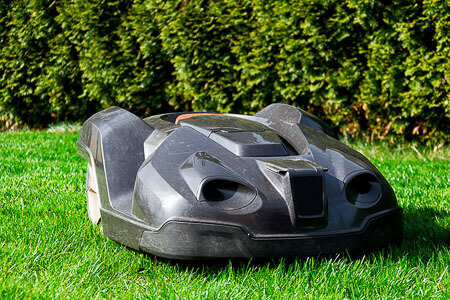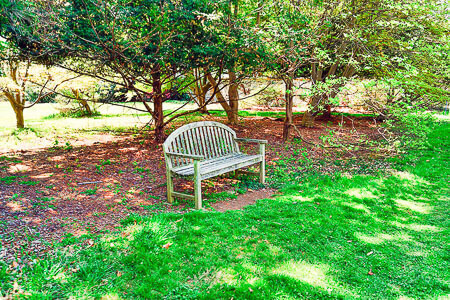
Clean lawn edge thanks to polyethylene root barrier

Always beautiful, clean lawn edges and clear boundaries to the flower bed thanks to root barriers made of polyethylene. We explain how it works.
Spring is finally here and the temperatures are finally pleasant again. The birds are chirping and in the garden at home the drab brown of the shrubs and trees is turning to a soft, fresh green.
But this also means that there is some work to be done in the garden. The lawn needs to be scarified or the flower bed cleared of weeds.
In a previous blog article we already talked about effective root protection with plastic sheets made of polyethylene. Today's article is about separating lawn edges from the flower bed with plastic sheets.
As soon as the sun shines, the lawn ends its hibernation and begins to grow.
Unfortunately, not only in height, because the lawn spreads and does not even stop at the lovingly laid flower bed.


Root barriers for lawn edges
Cutting the edges of lawns always involves work and even if this can usually be done quite easily, you can save yourself this work by using small plastic strips made of polyethylene to separate lawns from the flower bed.
A very small thickness of about 2mm to 3mm is already sufficient. The height of the growth barrier for the lawn does not need to be more than 20cm either, because lawns do not really root very deeply, so that spreading below the root barrier is ruled out even at low heights.
The low thickness of the thin-walled root barrier, on the other hand, has the advantage that it is hardly noticeable visually and thus does not detract from the overall appearance of the garden.
How do I create a root barrier for lawns?
First of all, you should use a shovel or a spade to pierce the lawn edge so that a small gap is created in which you can later insert the polyethylene strips. Once this has been done over the entire length, the strips are inserted into this gap so that the upper edge of the root barrier reaches just above the turf.
If it doesn't slide in quite so deeply in one place or another, you can help it along a little with a rubber mallet by tapping it lightly. However, it is advisable to place a board of about half a metre on the edge of the root barrier and hit it with the hammer to avoid damage to the root barrier due to the small contact surface of the hammer.
Once the first panel has been inserted into the ground, the next panel should be inserted into the gap with a small overlap. Repeat this process until the entire lawn edge is protected from uncontrolled spread by a growth and root barrier.
Thanks to the low thickness of about 2mm to 3mm of the polyethylene as a root barrier for the lawn edge, the plastic can also be laid excellently in curves, for example to delimit a bed around a tree root towards the lawn edge.
What are the advantages of a root barrier for lawns?
In addition to preventing uncontrolled spreading of the lawn, a root barrier for the lawn edge offers other advantages. For example, the lawn edge can be cut excellently with a lawn edge trimmer by guiding the thread along the root barrier. In addition, weeds do not spread to the lawn and if you use bark mulch as a top layer in the flower bed, for example, it is always effectively separated from the lawn edge.
Even lawn robots are limited in their walking paths by the small edge and no longer stray into the flower bed, where they then usually get stuck.


TIP: Root barrier for ground cover
Often you will find ground-covering ornamental shrubs with a low growth height or small hardy flowers such as the forget-me-not in the flower bed, which will spread over the entire area of the bed over time without appropriate work. Regardless of whether you want to prevent the spread to the lawn, the procedure described above can also be used in the flower bed to establish a limit to the spread of the plants.
We hope you enjoy gardening.